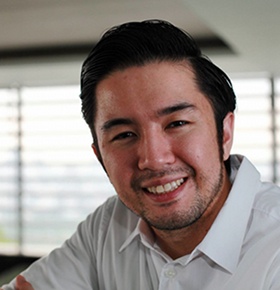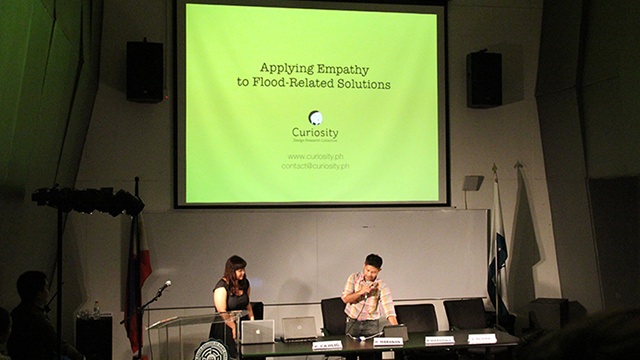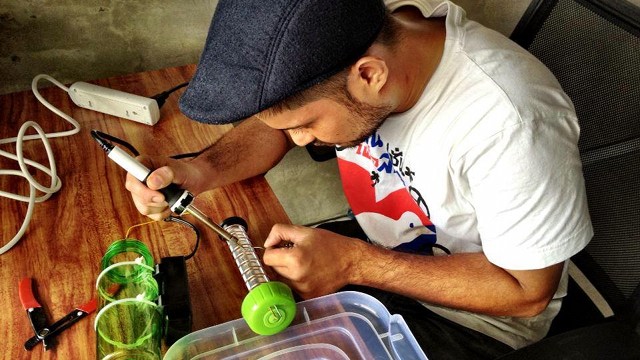SUMMARY
This is AI generated summarization, which may have errors. For context, always refer to the full article.
 Diego Maranan lives and breathes design.
Diego Maranan lives and breathes design.
We met at a Starbucks in Ayala Triangle, Makati City, sheltered in from the rain, where the University of the Philippines Open University assistant professor spoke with animation, bringing life to the room amid gloomy weather.
He riffed on anything and everything. Prompted by the opening of my MacBook Pro, he launched into a discussion on how the aesthetics of computers have changed over the last 40 years. His ideas on how everyday things are designed or how these can be improved were aplenty.
Maranan, after all, co-founded Curiosity, along with Pamela Cajilig (design anthropologist) and Birdie Salva (business innovator). Curiosity had grown to be the go-to design research consultancy in the Philippines. Their tagline read like a great Chinese proverb: Only the curious have something to discover. It was the theme of our conversation.
We talked about how companies often make assumptions about their users that they do not necessarily take the time to validate. Instead of this approach, business leaders need to interact and empathize with users to gain a user-centric perspective, he said.
Localizing the design of products or services is key, too. This applies especially to the Philippine context, which has such a unique and varied culture.
During the actual design process, it’s impossible to force creativity, he said. But it can be facilitated through a minimalist, clutter-free workspace that gives room to frame ideas. It’s also important to work with peers who double as mentors in challenging you to toe the delicate balance between creativity and pragmatism that innovation requires.
Here are snippets of our chat:
EF: Can you tell us about your background as a designer?
DM: Before I did design, I did everything from working full-time as a developer to dancing professionally on the weekends. It was not until my masters at the School of Interactive Arts and Technology at Simon Fraser University (SFU) that I began to think like a designer.
And there I was surrounded by programmers, artists, designers, architects, theorists, sociologists, and anthropologists. I really made it a point to learn from all of them because you never know where inspiration will come from.
EF: How can the interested Philippine entrepreneur learn design as well as you do?
DM: In business, people are always trying to achieve creativity and innovation. We think of design as a bridge that transforms creative ideas into valuable innovations. By doing design research, an entrepreneur can get to understand how people interact with products and services, and how he can make them better. At SFU, one of the big research areas was on something called “everyday design.”
We would look at how people, ordinary people, could be thought of as designers. If you think about it, most people really are designers. We appropriate things. We hack things. There’s this great image of a guy with these massive headphones on. Only they’re not connected to an MP3 player, but to a massive laptop tucked into his back, behind his belt. So it’s not so much about becoming a designer—it’s a matter of doing the designing we already do that much better.
READ: [Thinking Through Design] Understanding its significance
EF: What can entrepreneurs do to become better designers?
DM: Our thinking has to become more user-centric. When companies approach us to help them create a product or service, they think they know what their user wants and what will be useful to them, but that’s not necessarily the case. They don’t always take the time to validate their assumptions about their users.
For example, one of our clients manufactures household products. They wanted to do a promotional giveaway that would help mothers in doing their laundry, but they did not know what item to go with. In most cases like this, a company would simply plow ahead and choose based on what’s cheapest.
But we actually went and observed women doing laundry. We did what you would call an artifact inventory. ‘Why is your tub this big? Where do you put it? When do you use it?’ Then we asked the same of their brush, their bucket. And then we observed their body movements, trying to figure out their pain points.
EF: And what did you learn about the women?
DM: We noticed they didn’t wear gloves. They needed to feel when the clothes were clean, when they were rinsed. We realized that cleanliness is assessed not just visually or through smell; it’s also assessed on a tactile level.
So we developed a prototype for a product that protects the parts of their hands that experience the most pain during the hand-washing process, but that allows them to be able to still feel the clothes and the water. This is how research can lead to better, more useful designs.
EF: So a big challenge in design is contextualizing it to a culture?
DM: Yes, especially in the Philippine context. Take, for example, the inflatable life rafts we use when it floods. Most won’t fit in the narrower streets that you find in some neighborhoods in urban areas. Or if they do, they risk getting ripped by the barbed wire or broken glass that you find on so many walls.
This is kind of a project we’re working on now—one solution is to avoid having a raft with a single, puncture-able container that keeps the vessel afloat. Maybe have a lot of different containers, as in the case of water bottle rafts. You can puncture one, or 10, or 20, and the vessel will still keep afloat.

EF: How would you get entrepreneurs, who may not be used to thinking so creatively, to think that way?
DM: You can’t tell someone to be creative. It just doesn’t work that way. But what we do have control over is the context in which we think. For instance, our Curiosity space is very minimalist. It’s supposed to provide us a stage to frame our ideas, nothing more and nothing less.
Think of a canvas. To go paint a really beautiful picture, you need a canvas that’s completely blank. So if you go to our office, it’s got an industrial look, clean gray walls, clean gray floors.
You can also go out of your way to experience the world like you usually don’t: use your left hand to do things that you normally would do with your right hand, or look up or behind you when you normally just look straight ahead or down.
In terms of design specifically, empathy is a big key to creative insight as well, and it’s important to be more empathic towards the user by spending time with them, listening to them, and observing them to really understand what pain points they experience, and what would be valuable to them.
EF: What sorts of brainstorming activities do you do there with your principals to think creatively?
DM: We really explore ideas and defer judgement on crazy ideas. We use and adapt a process known as design thinking, and we create mock-ups or prototypes to make concepts more tangible.
And I think when you have the right people that’s all you need. We’re all co-founders, me, Pamela, Birdie, but I think of them as my mentors for different skill areas that I lack, such as business innovation, and vice versa.
Pamela really enriches my understanding and analysis of social and cultural aspects of design, and also qualitative research methods and marketing. From Birdie I learn lots about design management and operations, and keeps us all up to date on global conversations on innovation.
He just knows about all these cool things going on. I mentor them in terms of art, technology, and psychology-based principles that are useful in design. Together, we help each other maintain the balance between creativity and pragmatism, because you really need both to succeed. You need to be able to burst out of the box, but at the same time be able to contain it.
EF: What’s a recent success that you can point to that shows just how effective your creative process can be?
DM: During one of our brainstorming sessions with an industrial designer, we came to the conclusion that communication during a flood is crucial. One person we interviewed said that the only thing that kept her from being hysterical was the fact that she could contact her children with a cell phone. So we wondered: How can we keep portable communication devices charged when the power may be in and out?
We worked with industrial designer John Tan to come up with a prototype of a battery that’s powered by rainwater, by floodwater. It’s a water bottle. Inside of it is a galvanized steel pipe and some copper wire. When you put rainwater in it, which is acidic, more acidic than tap water, it causes a chemical reaction that creates a flow of electrons. You can then take that flow of electrons and normalize it so that it’s always at 5 volts. And viola, you have yourself a rainwater-powered battery.

Design Redefined
As articulate as Maranan was and as well-rounded as I prided myself in being, I did not immediately grasp the concept of the rainwater-powered battery. So I stuck around and asked him questions after the end of our formal interview. How much acidity did it take to power the battery? How long did it take to charge your average phone? And, of course: Was it iOS compatible?
As he patiently answered all my questions, I began to understand the workings of the battery as well as something much greater. My educational limits, or that of my friends, colleagues, or peers, whatever they may be, did not matter one iota in the long run. What we did not know now, we could learn in time.
What mattered was that we sat down to talk—like Diego did with me—to consciously make an effort to change things, to shake up our corner of the Philippines. It’s the same spirit with which I think you sought out whatever knowledge you could wring out from this article, and it’s the same spirit with which I hope you continue to join me on weekends from here on out.
Any change, even as something as abstract or as awe-inspiring as trying to reduce flooding in the Philippines, begins with a simple step: We must do something by our own design. – Rappler.com
Rappler business columnist Ezra Ferraz graduated from UC Berkeley and the University of Southern California, where he taught writing for 3 years. He now consults full-time for educational companies in the United States. He brings you the business leaders of the Philippines and their secrets via Executive Edge. Follow him on Twitter: @EzraFerraz
Add a comment
How does this make you feel?
There are no comments yet. Add your comment to start the conversation.